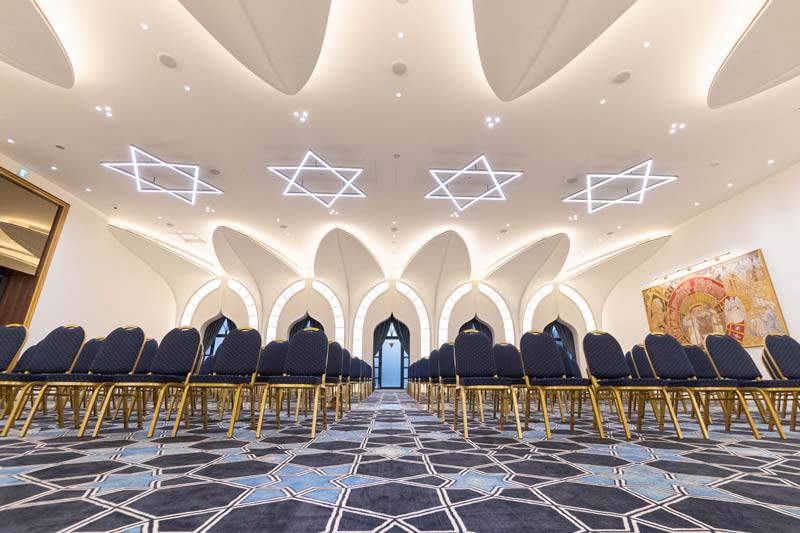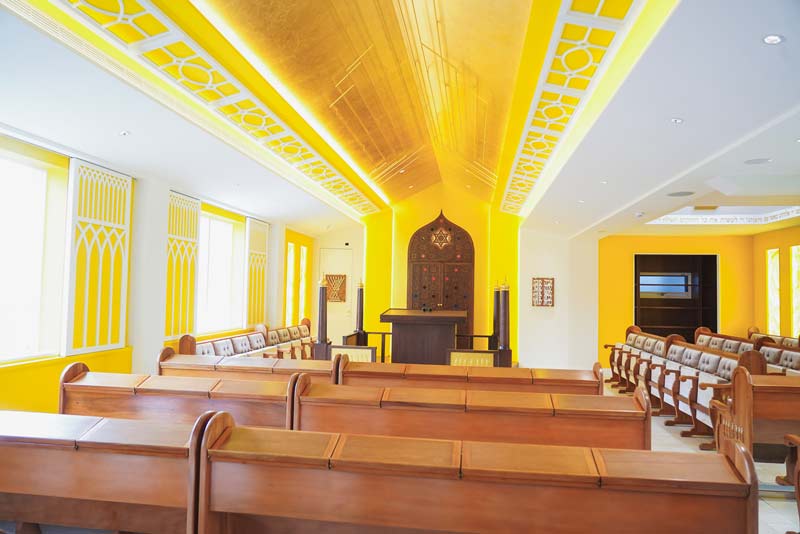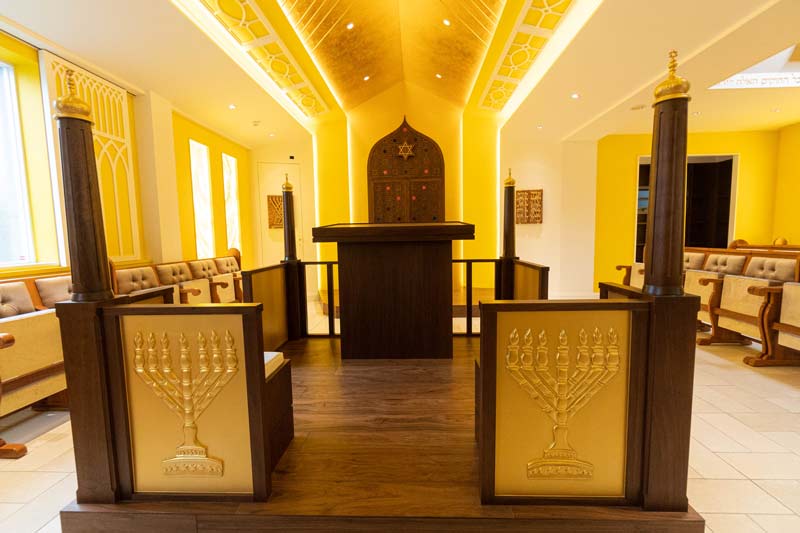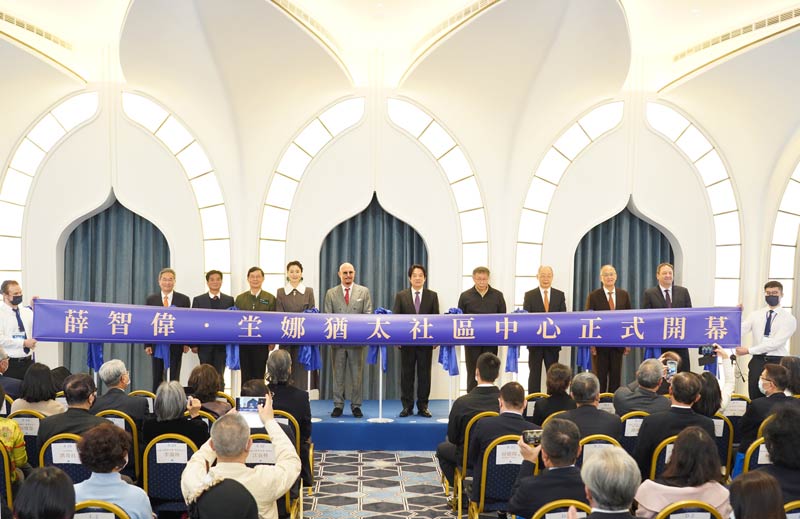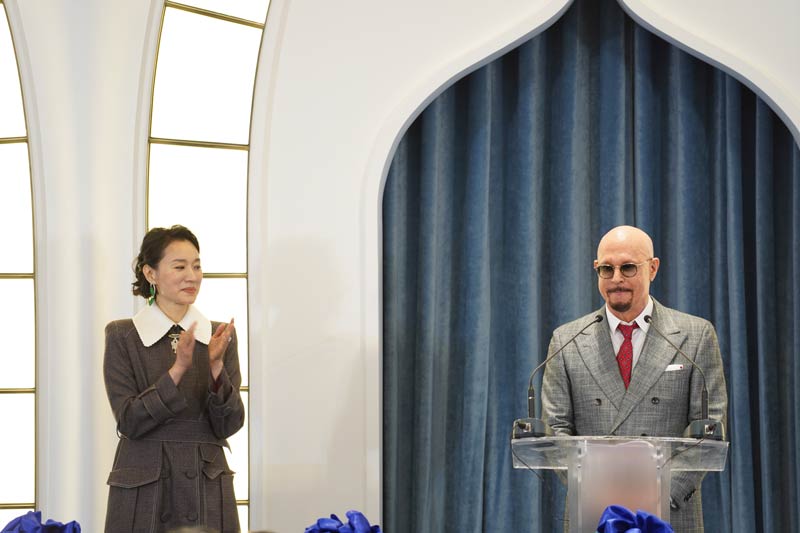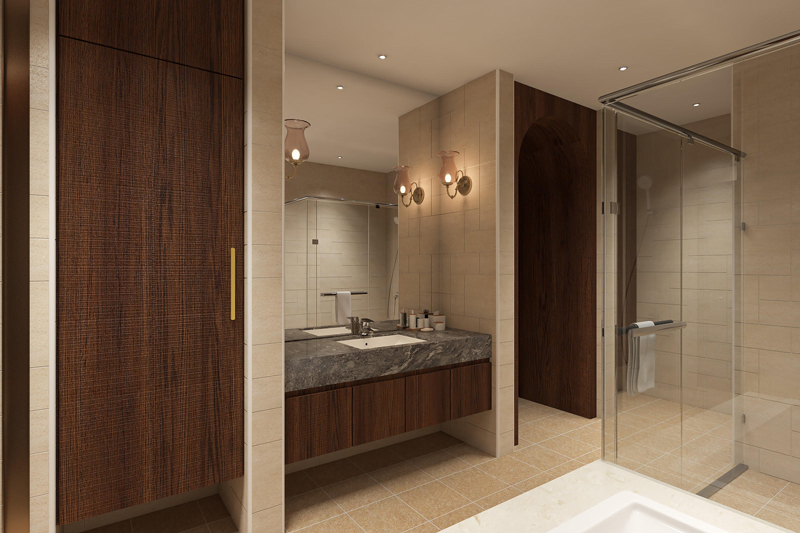“This is a house of G-d. It has to be beautiful, it has to be solemn. I’ve toured the synagogues of Europe, and observed the domes, the mosaics, the carvings: you could see this was a gift to G-d and a home for G-d. This is my attempt to build a temple that draws on traditional elements, while including a few newer aspects as well.”
“I put a lot of thought into the selection of the materials, and to the height of the ceiling. I wanted this to be a place that, when people go up to the roof of the Center and emerge outside, they’ll see a beautiful Middle Eastern-style courtyard with a temple at the front. And when they enter the synagogue, with its high ceiling, they’ll be entering a beautiful and serene place of worship, a house of G-d. It’s a work of passion.”
“It has everything that a temple should have, including a library for study connected to it, a place to hold the prayer books. There’s going to be a beautiful bima at the center where the rabbi will lead services, and an ark which will contain the Torah scrolls. I tried to make the ceilings as tall and inspiring as possible; everything is focused toward heaven.”
“From the selection of the materials, to the design, to the shape, I’ve tried to create what is my version of what is holy and beautiful in a Jewish temple. And I’m hopeful G-d will be pleased with the work.”
“From the selection of the materials, to the design, to the shape, I’ve tried to create what is my version of what is holy and beautiful in a Jewish temple. And I’m hopeful G-d will be pleased with the work.”


